The Steel Advantage in Modern Construction Insights from One Vanderbilt
The Advantages of Steel-Intensive Construction
Strength and Durability
Steel's impressive strength-to-weight ratio makes it ideal for towering skyscrapers and vast bridges. Unlike concrete, which can succumb to cracks and deterioration over time, steel maintains its integrity even under the most extreme conditions, from seismic events to high winds.
Speed of Construction
Time is money in the construction industry, and steel saves both. Prefabricated steel components are quickly assembled on- site, slashing construction times. This not only speeds up project completion but also reduces labor costs, making steel a cost-effective solution.
Flexibility and Adaptability
One of steel's standout features is its flexibility. Buildings can be easily expanded or modified, making steel structures highly adaptable to changing needs. This is particularly beneficial in commercial spaces where businesses may grow or change direction.
Sustainability
Steel is the ultimate recyclable material. It can be reused infinitely without losing its properties, often coming back stronger. The process generates minimal waste, aligning with global efforts toward sustainability and environmental conservation.
Case Study: One Vanderbilt – A Testament to Steel's Potential
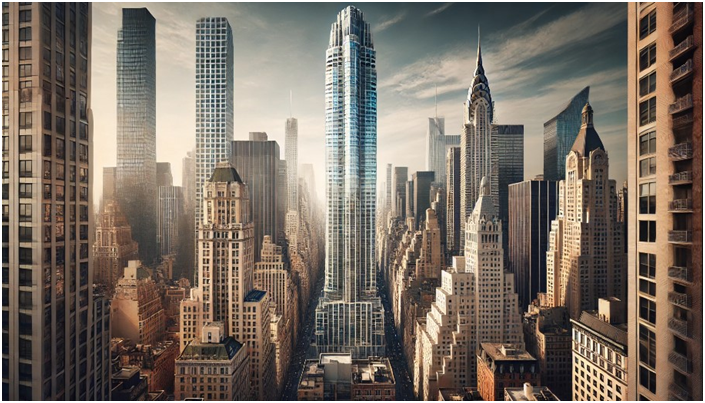
Steel's superiority is on full display in the construction of One Vanderbilt, a stunning office tower that has redefined New York City's skyline. Standing tall at 1,401 feet, this $3.3 billion project showcases the power of steel in modern architecture.
One Vanderbilt
One Vanderbilt isn't just about height—it's about efficiency and sustainability. The building's steel frame, designed by Severud Associates, includes 26,000 tons of steel, providing expansive, open office spaces with floor-to-ceiling windows. These steel components were erected with remarkable speed, allowing the project to be completed six weeks ahead of schedule, even in face of a global pandemic.
The building features a sleek design combining rectangular forms with modern sustainability concepts and public spaces. Floor heights range from 14 feet 6 inches to 24 feet. The glass and terracotta façade pays homage to nearby landmarks like Grand Central Terminal. A steel frame and strong concrete walls form the core, anchored by a 9-foot thick concrete mat and stabilized by steel outrigger trusses. A steel tuned-mass damper minimizes movement for occupant comfort.
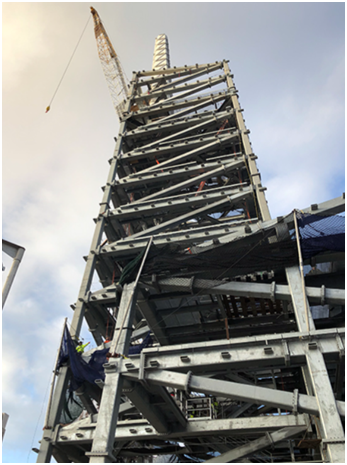
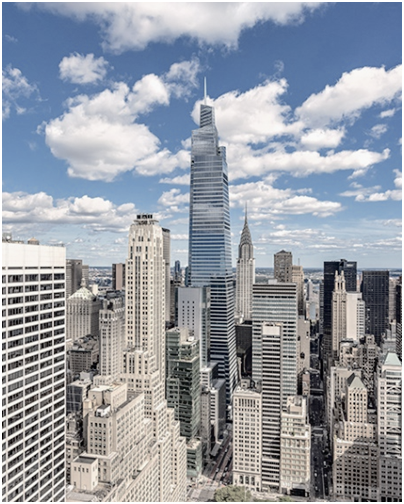
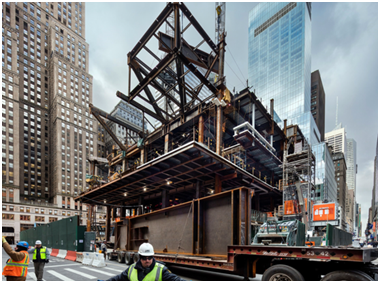
The building's unique shape is defined by special systems on the fifth and 12th floors, with engineers using custom steel connections and a mix of wide-flange sections, box columns, and built-up plate girders. A 128-foot steel spire, assembled at the top, includes diagonal stiffeners to control wind and prevent icing, designed following wind tunnel tests.
AECOM Tishman managed construction using a steel-first approach, erecting steel columns and beams before concrete elements, aided by digital tools like Rhino and Tekla for precision. The core walls, up to 30 inches thick and reinforced with grade 80 steel, ensure stability against strong winds, with a tuned mass damper further reducing movement. Accurate measurements from neighboring buildings guaranteed precision throughout the project, showcasing the expertise and meticulous planning of the construction team.
The result? A building that not only meets but exceeds the highest standards of modern construction.
The building's unique shape is defined by special systems on the fifth and 12th floors, with engineers using custom steel connections and a mix of wide-flange sections, box columns, and built-up plate girders. A 128-foot steel spire, assembled at the top, includes diagonal stiffeners to control wind and prevent icing, designed following wind tunnel tests.
AECOM Tishman managed construction using a steel-first approach, erecting steel columns and beams before concrete elements, aided by digital tools like Rhino and Tekla for precision. The core walls, up to 30 inches thick and reinforced with grade 80 steel, ensure stability against strong winds, with a tuned mass damper further reducing movement. Accurate measurements from neighboring buildings guaranteed precision throughout the project, showcasing the expertise and meticulous planning of the construction team.
The result? A building that not only meets but exceeds the highest standards of modern construction.
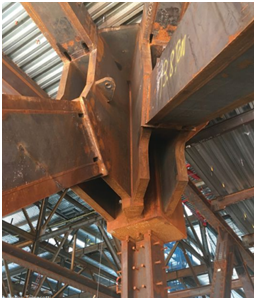
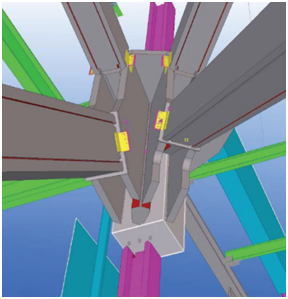
Conclusion
One Vanderbilt is more than just a skyscraper; it's a symbol of the future of construction. Its success demonstrates the unparalleled benefits of steel—speed, strength, flexibility, sustainability, and cost-effectiveness. As our cities continue to grow, steel-intensive construction will undoubtedly play a central role in shaping the urban landscapes of tomorrow. Steel's journey from raw material to recycled wonder is one of continuous innovation, making it the material of choice for the future. Whether you're building the next iconic skyscraper or a humble office space, steel stands ready to rise with you.
SFRC in Tunnels and Heavy-Duty Floors: Enhancing Strength and Sustainability
Introduction:
Steel fiber reinforced concrete (SFRC) is a composite material that combines traditional concrete with steel fibers, without usage of conventional steel reinforcement. Adding steel fibers enhances the concrete's properties, making it more robust, durable, and resistant to cracking.
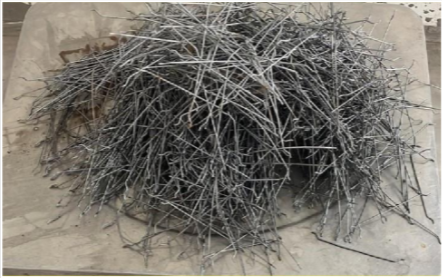 Fig 1: Site Steel Fiber Photos
Fig 1: Site Steel Fiber Photos
Fiber Reinforced Concrete has been particularly put to use in Tunnel linings.
Sustainability aspects:
Steel Fiber has reduced carbon footprint in the tunnel construction works due to reduction in use of steel and concrete.
Use of Steel fiber:
Steel Fiber can be useful in the following areas:
- Shotcrete Works
a. With Steel Fiber, shotcrete thickness reduced by 40% - 50% compared to conventional shotcrete with wiremesh.
- Concrete Works
a. With Steel Fiber, thickness reduced by 30% - 50% compared to conventional RCC lining.
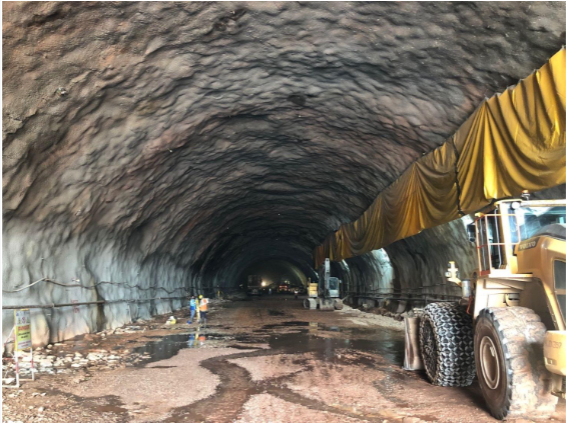
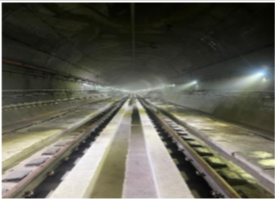
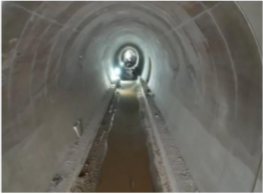
Tunnels have seen a very interesting trend in the steel usage. INSDAG tried to get a first-hand experience by interacting with industry expert who has field experience. In this regard, INSDAG has noted the following points:
Steel usage is primary in the following two areas:
- Shotcreting
Earlier
New Trends
- Shotcreting was done with the help of 4mm, 6mm and 8 mm dia wire mesh with 6mm dia mostly being used
- The consumption of steel in the case was close to 6 Kg/ m2
- Conventional steel fixing was time consuming
- The major risk was of loose falls during steel fixing.
- Steel Fiber is mixed in the batching plant
- The consumption of the same is around4.5 Kg/m2
- SFRS has reduced construction time.
- Has reduced the percentage of rebound.
- Risk factor almost eliminated
- Tunnel Lining
Earlier
New Trends
- Double Layered reinforcement was used
- Component Thickness of 300 to 500 mm
- The consumption of steel in the case was close to 70-100 Kg/ m3
- Time consuming process.
- Risk of puncturing of PVC Waterproofing membrane.
- Steel Fiber is mixed in the batching plant
- The consumption of the same is around 40 Kg/m3
- The need for reinforcement bars is eliminated
- Component Thickness reduced to 150 to 300mm.
Advantages of Steel Fiber:
- Enhanced durability
- Increased tensile strength for better resistance to breaking under pressure
- Improved crack resistance
- Greater flexural strength to withstand deformation under load
- Strong impact resistance
- Strengthened fatigue resistance to endure higher stress levels
- Superior resistance to spalling, preventing surface chipping under stress
Major Suppliers of Steel Fibers:
- Normet India Pvt Ltd
- Precision Drawell Pvt Ltd
- Bekaert Industries Steel
- Marchem Specialities Pvt. Ltd.
Typical Features:
|
Shape |
Type |
Length |
Thickness |
|
3D (Double End Hooked) |
Glued |
35 mm for shotcrete 60 mm for lining concrete |
< 1.0 mm |
A few consultants in the field of Tunnel Engineering:
- Amberg Engineering
- Lombardi Engineering India Pvt. Ltd.
- ICT
- Tumas
- Geodata Engineering
Codal References:
EN 14889, ASTM A 820, ISO 15862, ISO 13270 (No specific Indian Standards for FRC // SFRC)
Note:
- In India, SFRC is a recent phenomenon and it was used in some tunnels of USBRL project.
- RVNL has started using Steel fiber in its projects like in Bhanupali-Bilaspur-Beri Railway Line Project.
- NHAI has started using Steel Fiber in its projects like in 8-Lane Delhi-Vadodara Greenfield Expressway Project.
- In Tunnel No. 13, 14 & 15 of the USBRL, no steel reinforcement bars have been used in 90% of the tunnel lining works. It has been replaced with Steel Fibers.
- Efforts are on to explore use of SFRC in other infrastructure activities as well
- Steel Fiber is mixed in the batching plant to the concrete
- There are some hiccups during concrete pouring, due to Fiber Clustering effect.
Other Important areas:
Steel majors can explore the possibility of the following areas:
- Hydraulic Gantries for the Tunnels: A very important aspect in the tunnel lining execution works.
- Rock Bolts: A significant share of the project in terms of cost is attributed to rock bolts
- Primary support system like Steel Lattice, Ribs, forepoles and piperoofs etc.
Courtesy: M/s Dilip Buildcon, Bhopal
References:
- B2B Purchase June 2024 Issue
Tags
- Steel Fiber Reinforced Concrete
- Heavy Duty Construction
- SFRC Applications
- Steel
- USBRL
- Tunnels
- Shotcrete







 Registration
Registration




